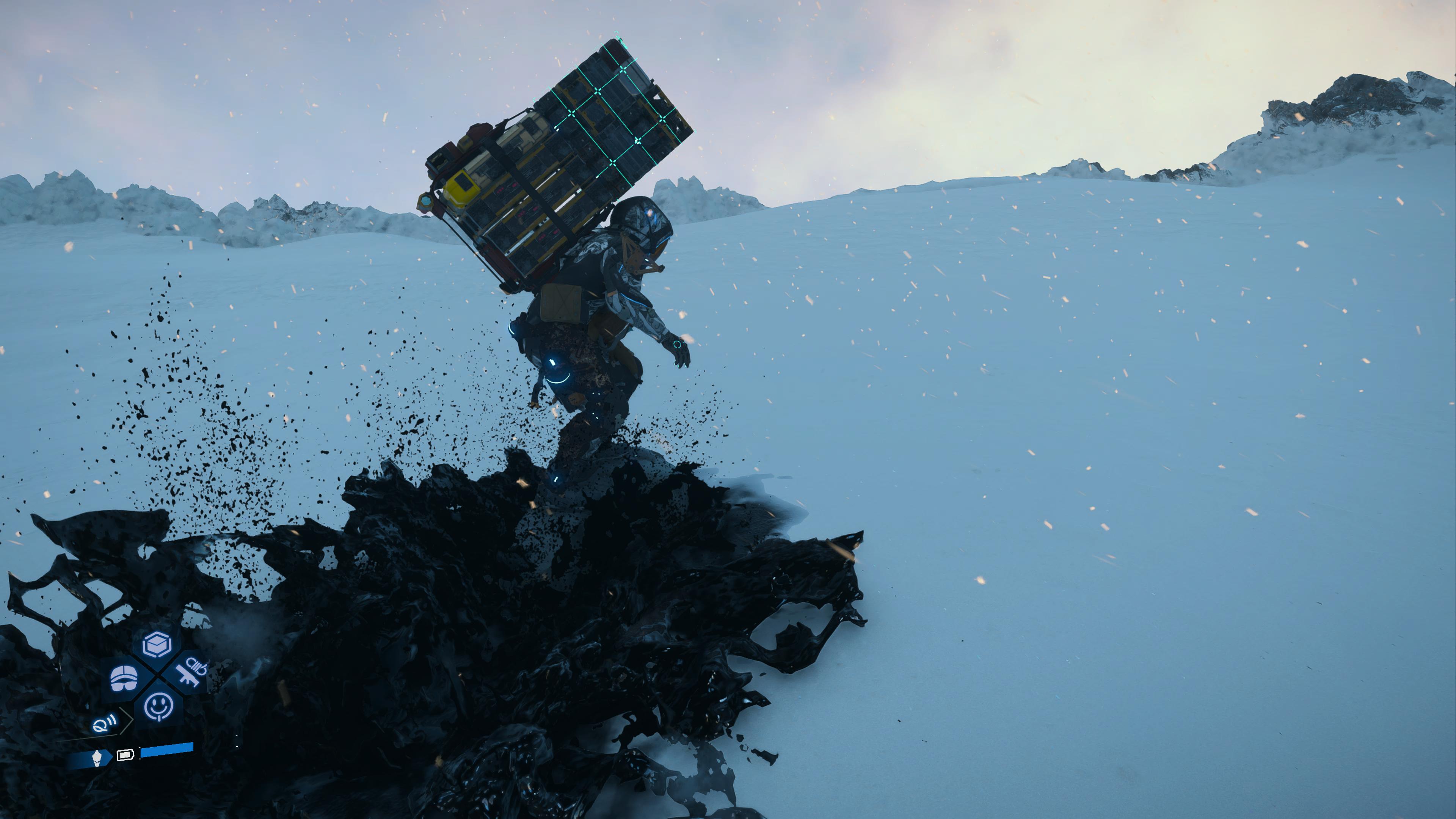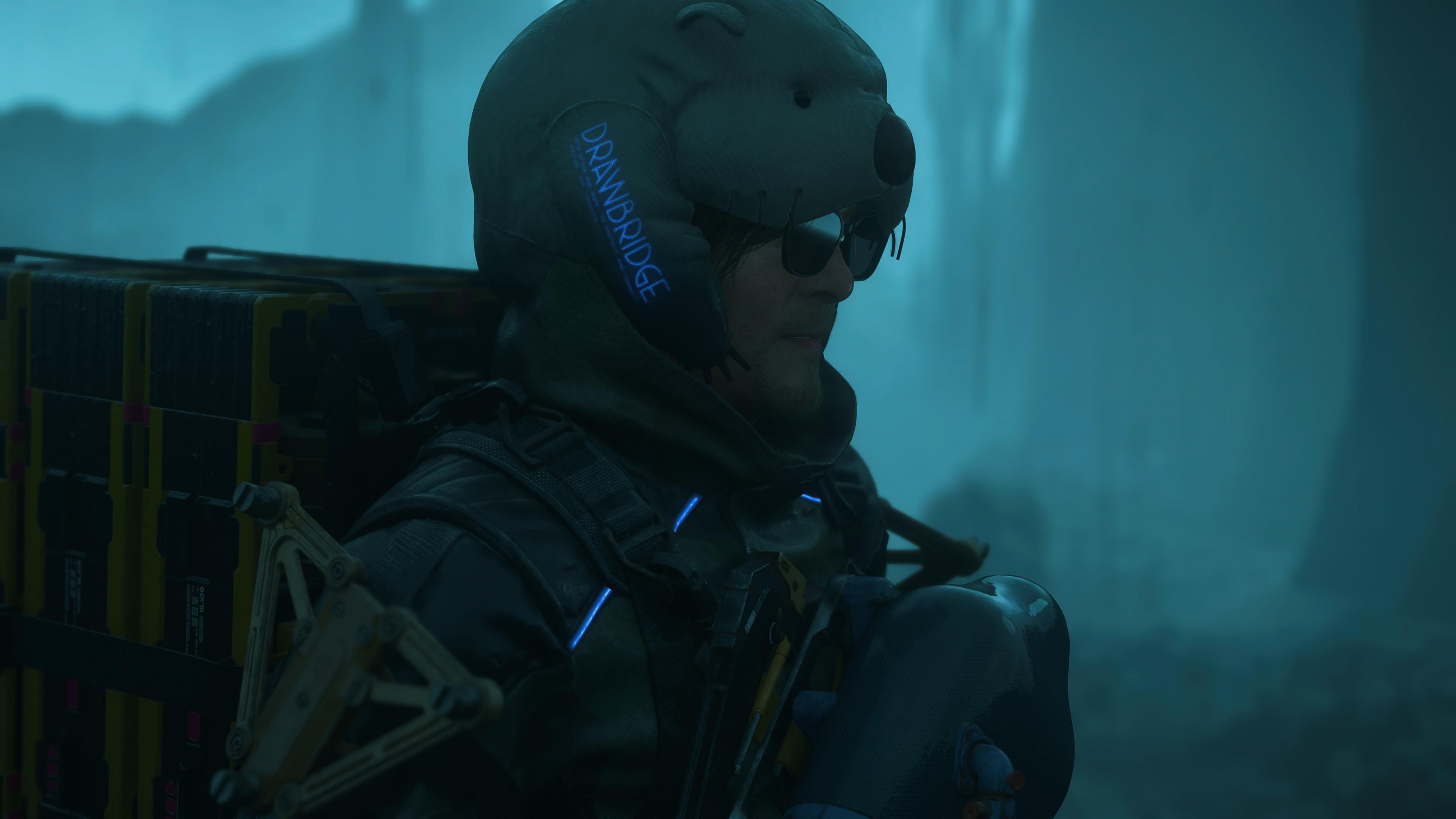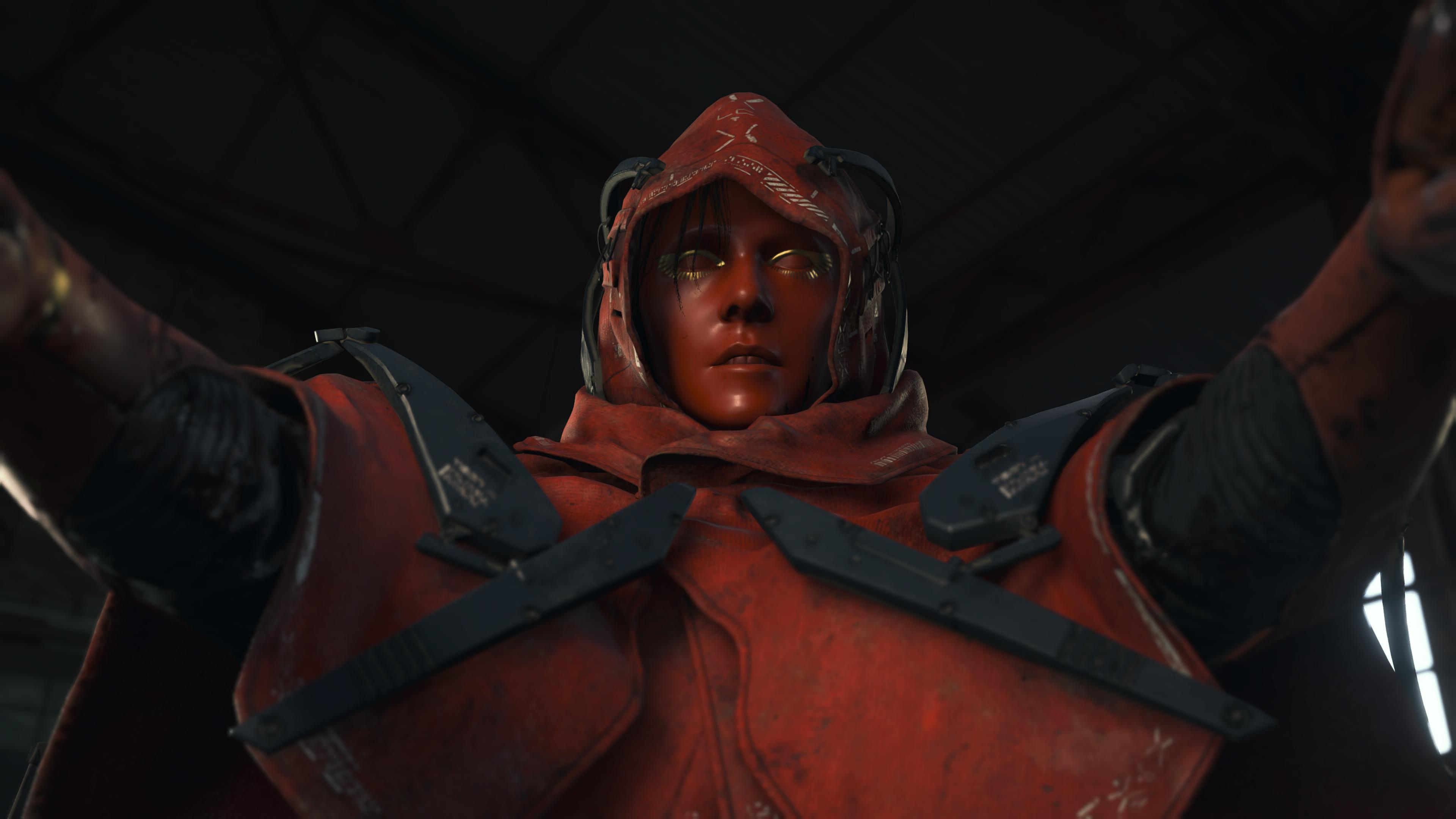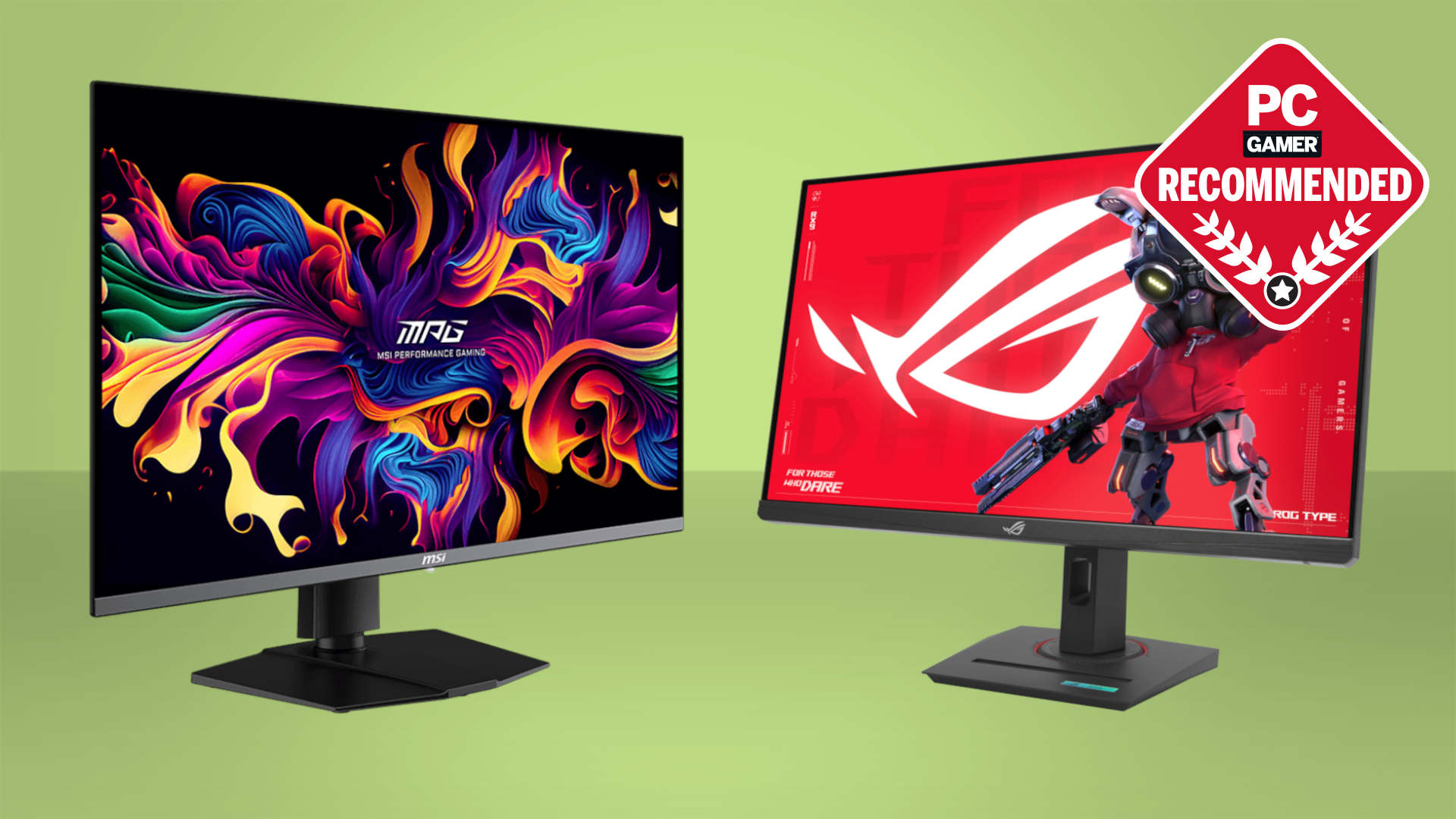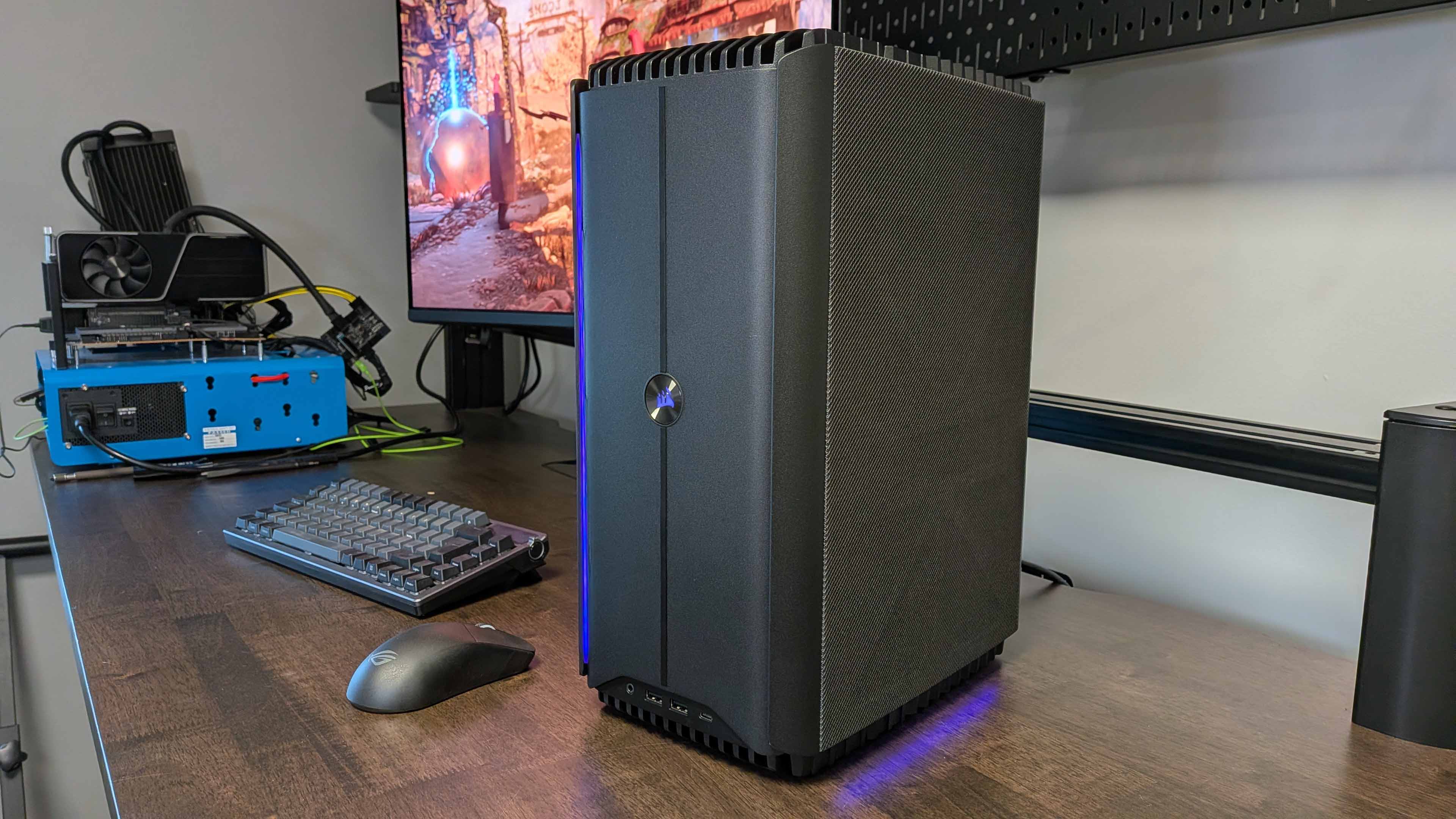Death Stranding 2 cements Hideo Kojima's legacy as a PC game designer still living in the console world
Since 2015's Metal Gear Solid 5, Kojima's games have been inching closer to immersive sims—at least in between all the cutscenes.

Around the 25-hour mark of Death Stranding 2, one of Japan's most acclaimed film directors asked me to deliver a pizza to his neighbor a valley away—an anime VTuber who has withdrawn from humanity after seeing her weapons bent towards evil. "The one thing she still does seem to believe in, however," says the extensive in-game encyclopedia, "is the delicious taste of piping hot pizza."
Death Stranding 2 is bursting with the kinds of intertwining, crunchy systems pioneered by immersive sims like Deus Ex
By this point I've already tip-toed my way across craggy terrain to deliver fragile cargo without breaking it, and the trauma of dropping a box of records belonging to post-apocalyptic Australia's last living musician 10 hours before still haunts me. Thank god only 30% of them broke. This, though, is the first delivery I've had to make in Death Stranding 2 with a couple specific requirements—that the pizza stays flat, and that it's still hot when I arrive, which means I have to work fast. But time isn't my only enemy here: if I get rained on or have to ford a deep river, that wet pizza's going to get cold in a hurry.
Luckily I've arrived at the Pizza Chef's remote outpost in an off-road truck that keeps cargo flat and protects it from the elements. It's slow and difficult to maneuver through the thickly forested hills that surround the VTuber Data Scientist's shelter, but I still make it with time to spare. If I'd been driving my vehicle of choice for much of Death Stranding 2, though, the faster, more maneuverable (but less cargo-friendly) tri-cruiser motorcycle, I'd have had to come up with a totally different plan—maybe ditching the bike and opting instead to fabricate a floating cargo carrier, which hovers above the ground and stays happily horizontal so long as you don't saunter off a cliff.
Even one of Death Stranding 2's silliest missions is nudging me to pay attention to just how many choices and tools are at my disposal to get from one place to the next.
By the end of the game, when I'm crisscrossing the entire continent for deliveries and dodging dangerous mechs and even more dangerous ghosts, the game's no longer just suggesting I think about the weather, the types of bullets I'm packing, the types of gloves on my hands and the boots on my feet—it all matters. The exciting bit is how many fun options there are for dealing with every single challenge.
Back to the beach
I'm happy to say that Death Stranding 2 feels Metal Gear as all hell
Death Stranding 2 is out this week, though only on the PlayStation 5—like the first game, it's all but guaranteed to release on PC eventually, which is why I've spent more than 40 hours across the last two weeks delivering cargo across Mexico and Australia and watching some quintessentially mind-bending Kojima cutscenes. Reaching the end in the time I had to play meant I was too rushed to experiment with even half of this game's bottomless toy box of weapons and gadgets, but I've seen enough to recognize Death Stranding 2 as a PC game in console clothing, bursting with the kinds of intertwining, crunchy systems pioneered by immersive sims like Deus Ex.
"At the beginning it was a game focused on deliveries, something no one had ever seen before," game director Hideo Kojima said recently in an interview with Wired. "Now the public is familiar with the idea, so I wanted to give players more freedom, even those who want to fight, for example...
Keep up to date with the most important stories and the best deals, as picked by the PC Gamer team.
"You can avoid enemies by taking a longer ride around the map or by quickly passing a vehicle or motorbike through an encampment, or you can fight them. I wanted the choice to be up to the player. In case he chooses combat, we had to change the design of the weapons to make them easier to use. When we were working on these mechanics, I was a little worried, because many of the team members who worked with me on Metal Gear still work with me, and we kept asking ourselves, 'Does this feel too Metal Gear?' but we didn’t do it deliberately."
I'm happy to say that Death Stranding 2 feels Metal Gear as all hell—but not too Metal Gear, despite Kojima's team clearly cribbing from the open-ended stealth toolset they'd designed a decade ago in Metal Gear Solid 5.
When I played the first Death Stranding, I saw its focus on the granularity of cross country delivery as evidence that Kojima was in a new era of his career, one more interested in player creativity than linear storytelling.
Now I think that wasn't quite right.
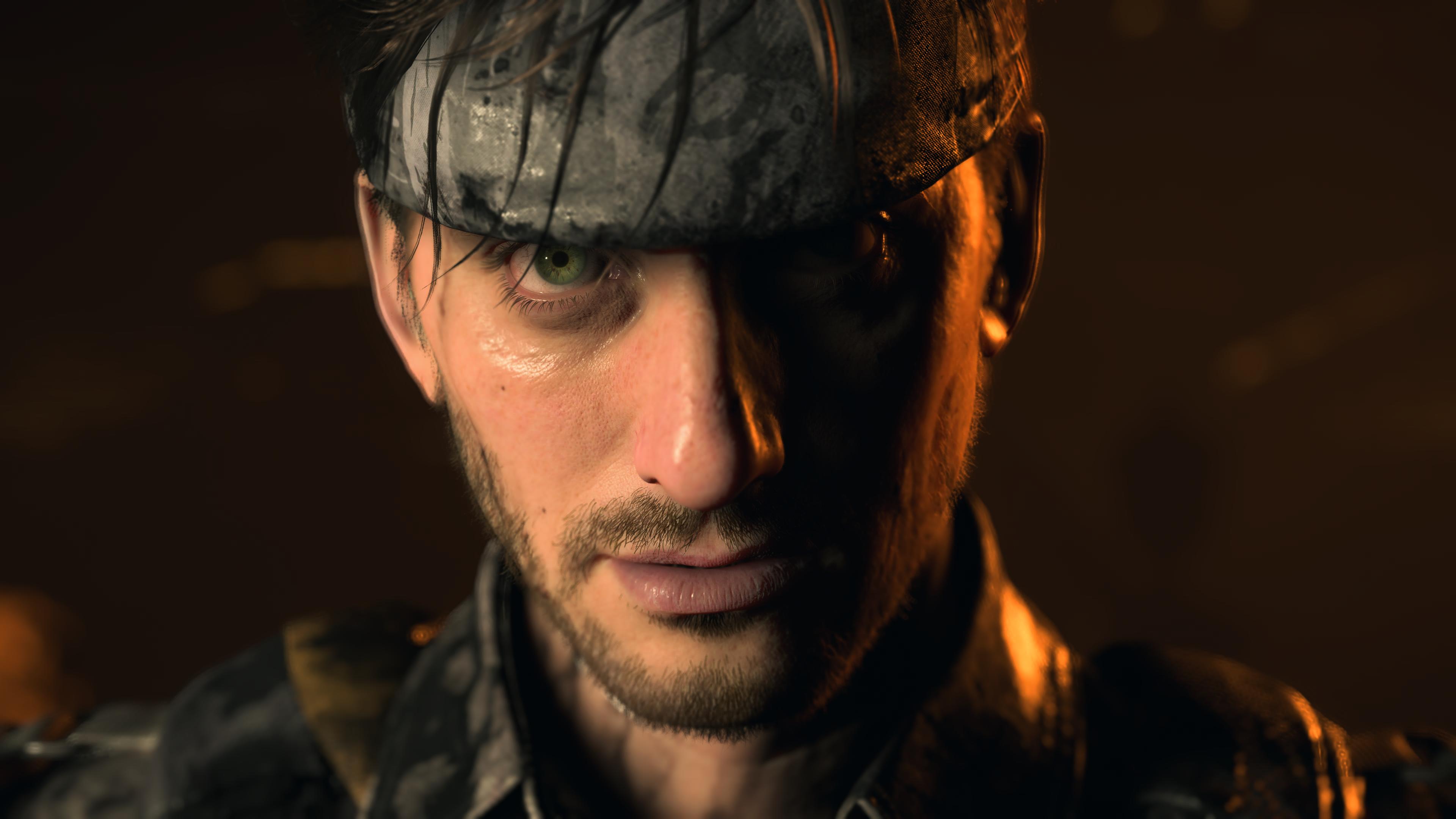
Inside Hideo Kojima there are two wolves. One is obsessed with longform "cinematic" storytelling layered with confounding metaphors; it's desperate to say something about life through the medium of videogames. The other wolf is the one who thought it'd be cool as hell if food rotted with the passage of time (in MGS3) or if you could throw empty bullet magazines at enemies to knock them out (in MGS5), and reasoned that if Sam Porter Bridges is going to guzzle energy drinks to boost his stamina, well then he'd have to be able to take a piss, too.
In Death Stranding 2 both wolves are feasting and howling in a harmony that he hasn't nailed for 20 years.
Strands upon strands
When PC Gamer awarded Metal Gear Solid 5 game of the year in 2015, it was due to the triumphant freedom and creativity of the stealth action, "where the focus lies on user-generated stories by throwing together systems in two massive open worlds," which made up for the "weirdly half-baked" story. When Death Stranding (just barely) won our 2020 game of the year, the trek to reconnect a fractured, isolated society by walking from one end of America to the other was just so potent and cathartic it shone through the convoluted sci-fi premise Kojima had embedded it in.
Death Stranding 2 is absurd more often than it is profound, but precious few games attempt to be both, let alone succeed
Death Stranding 2 spends far less time explaining its setting, shifting the narrative balance towards planning and play right from the start. There are hours-long stretches where you'll barely spend any time watching cutscenes at all, though the final act does finally tilt hard in the other direction to try to pay off all the mysteries it sets up over the first 35 hours. (I'll have a more spoiler-filled dive into how that plays out later this week.)
The Australian environment is wonderfully varied; in a moment that will stick with me long after the details of the story fade, I drove my motorcycle headlong into a Mad Max Fury Road-scale dust storm, navigating by the shimmering highlights of my terrain scanner as lightning sizzled to either side of me.
Hours later I found myself in a blizzard on top of a mountain, an oxygen mask draining my exoskeleton's battery to combat passing out in the thinner air, relying on basic tools (ladders and climbing ropes) I hadn't needed since my earliest deliveries. At one point the new climbing gloves I'd just crafted were the only thing letting me inch my way up and over the peak's steepest point.
When combat became harder to avoid near Death Stranding 2's end, I failed an exhausting delivery that sent me through a huge nest of BTs, the ghosts that spawn pools of tar beneath your feet or wheels if you don't take great pains to sneak around them. After reloading and rethinking, I discovered the glory of DS2's coolest piece of new gear, a coffin surfboard that hovers above the ground. Where my offroad delivery truck slowed to a crawl in the BTs' muck and left me an easy target, the coffin board soared across tar even more efficiently than land. I surfed down the mountain's slope and through the BT zone so fast I never even saw them.
The first game eventually outfits you with a wide range of weapons and gadgets with specific use cases, but Death Stranding 2 quickly makes a point of giving your arsenal more versatility, with weapons able to incapacitate the human, mech, and BT enemies you'll end up facing. It's not just cleaner, but also made me more eager to rock up to enemy bases with a backpack full of weaponry so I could pivot from stealth to all-out combat.
On normal difficulty most enemies go down a little too easily to really make you work for a win, but as a delivery sim first and a shooter second, the balance feels about right. And I love the ways the obsessive attention to details in the simulation, like the angle of a slope that'll make Sam lose his footing, carries over to the weaponry—rifles with semi-auto and single-shot fire modes, the sharp shrapnel roar of the shotgun, the way powered combat gloves turn your punches into sizzling electric haymakers.
The day/night cycle affects everything from the temperature (no delivering hot pizza at night without a truck!) to how much power your vehicles use at night (turn those headlights off to conserve battery) to your chances of stealthing through a survivalist base undetected.
In one of the best examples of Kojima's wolves operating in rare harmony, new living puppet character Dollman (modeled after the face of one of Kojima's film idols) serves dual roles as an exposition mouth piece and a scouting device. When he's not chattering away, you can pluck him from Sam's belt and hurl him into the sky to survey enemy bases and mark baddies, before you yank him back by his string.
Kojima and his team have again looked at the open world, which so many big budget games treat as the perfunctory space you'll mostly ignore as you head from waypoint to waypoint, as a canvas for so many forms of expression: movement, strategy, isolation, comedy. While his style of storytelling hasn't changed that much since 2008's way-too-cutscene-heavy Metal Gear Solid 4, Death Stranding 2 offers so much more time and space for you to create your own stories.
And most of its growth as a sequel comes from the immersive sim playbook of priming the world for as many teensy little interactions as possible, and having the confidence to bet that players will revel in finding them.
Death Stranding 2 is absurd more often than it is profound, but precious few games attempt to be both, let alone succeed. I played most of it while the servers were offline, which meant I couldn't fully feel out how the multiplayer features—which see other players' roads, bridges, ziplines, and other helpful structures bleed into your own world—gel with its new narrative thrust "We should not have connected." But playing without them effectively amped up the weight and isolation of being a porter in this world, making the frequent needle drops of delicate, sometimes even mournful music land even better. (In one of my few complaints about Death Stranding 2, what seemed to be a bug stopped some of those songs from triggering when they should've, which was a real bummer).
This is certainly a maximalist sequel, throwing more of everything into the stew to enrich the combat and climbing and driving and talking and building (there are even new types of bugs to eat). That approach doesn't work forever; at some point too much stuff either dilutes the core flavor or can't save it from tasting stale. But there really isn't anything else like Death Stranding 2 except, well, Death Stranding. This one just goes to 11, and is pretty much always better for it.

Wes has been covering games and hardware for more than 10 years, first at tech sites like The Wirecutter and Tested before joining the PC Gamer team in 2014. Wes plays a little bit of everything, but he'll always jump at the chance to cover emulation and Japanese games.
When he's not obsessively optimizing and re-optimizing a tangle of conveyor belts in Satisfactory (it's really becoming a problem), he's probably playing a 20-year-old Final Fantasy or some opaque ASCII roguelike. With a focus on writing and editing features, he seeks out personal stories and in-depth histories from the corners of PC gaming and its niche communities. 50% pizza by volume (deep dish, to be specific).
You must confirm your public display name before commenting
Please logout and then login again, you will then be prompted to enter your display name.

